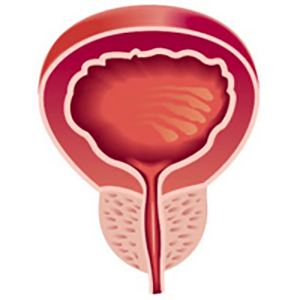Confirmatory transperineal saturation prostate biopsy combined with mpMRI decrease the reclassification rate in men enrolled in Active Surveillance: Our experience in 100 men submitted to eight-years scheduled biopsy

Accepted: July 3, 2022
All claims expressed in this article are solely those of the authors and do not necessarily represent those of their affiliated organizations, or those of the publisher, the editors and the reviewers. Any product that may be evaluated in this article or claim that may be made by its manufacturer is not guaranteed or endorsed by the publisher.
Authors
Introduction: The reclassification rate for clinically significant prostate cancer (csPCa) in men enrolled in Active Surveillance (AS) as been prospectively evaluated.
Patients and methods: One hundred patients with very low risk PCa underwent after 8 years a scheduled transperineal prostate biopsy (SPBx = 20 cores) combined with additional mpMRI/TRUS fusion biopsies (4 cores) of lesions PI-RADS scores ≥ 3. All the patients, after initial diagnosis, previously had mpMRI evaluation combined with transperineal saturation prostate biopsy (confirmatory and 3-year scheduled biopsy). Risk reclassification at repeat biopsy triggering the recommen-dation for active treatment was defined as over 3 or more than 10% of positive cores, Gleason score > 6/ISUP Grade Group ≥ 2, greatest percentage of cancer (GPC) > 50%.
Results: Multiparametric MRI was suspicious (PI-RADS ≥ 3) in 30 of 100 cases (30.0%); 70 (70.0%) vs. 20 (20.0%) vs. 10 (10.0%) patients had a PI-RADS score ≤ 2 vs. 3 vs. 4, respec-tively. Two (2.0%) patients with PI-RADS score 3 and 4 were upgraded (ISUP Grade Group 2); SPBx and MRI/TRUS fusion biopsy diagnosed 100% and 0% of csPCa, respectively.
Conclusions: Transperineal SPBx combined with mpMRI at ini-tial confirmatory biopsy allow to select an high number of men at very low risk of reclassification during the AS follow up (2.0%of the cases at 8 years from diagnosis); these data could be use-ful to reduce the number of scheduled repeated prostate biopsy during the AS follow up.
How to Cite
PAGEPress has chosen to apply the Creative Commons Attribution NonCommercial 4.0 International License (CC BY-NC 4.0) to all manuscripts to be published.

 https://doi.org/10.4081/aiua.2022.3.270
https://doi.org/10.4081/aiua.2022.3.270




